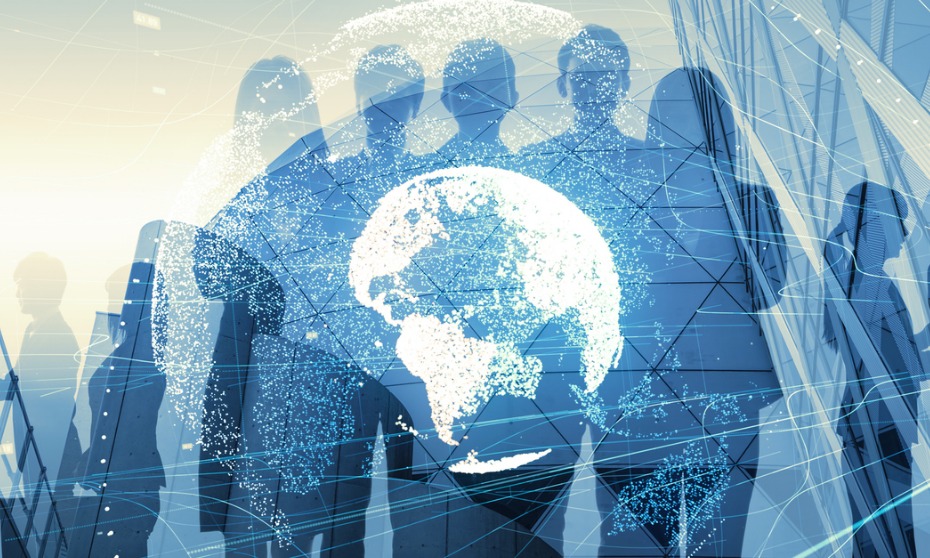
The best-run companies continually invest in their workforce and put people at the centre of their business plans

by Aaron Green, Head of SAP SuccessFactors, ANZ
In today’s world change is constant, and it’s happening all around us at ridiculous speed. Societal trends, geo-political shifts and macro-economic changes are so profound that even the reason businesses exist is shifting.
This year the Business Roundtable, made up of CEOs from America’s largest companies, declared that the new purpose of corporations should extend beyond a singular focus on shareholder value. Instead, businesses should benefit all stakeholders, including customers and employees.
With change happening so fast, even the savviest execs can struggle to keep up. For many regular employees, the changes are even scarier. Headlines shout about the risks of AI taking jobs. New technologies and automation can be difficult to understand, let alone work with.
The power of people
Along with change, another constant remains: the importance of your people. It’s no surprise the Business Roundtable included employees as a critical stakeholder in business success.
This is especially true as technology forces roles to evolve. As digital transformation shifts how businesses operate, there are risks that your employees’ jobs will be disrupted. In turn, this can lead to employee dissatisfaction and decreased performance. Managed poorly, your business will suffer.
This is where People & Culture comes in. The best-run companies continually invest in their workforce and put people at the centre of their business plans.
The evolutions of People & Culture
In recent years, People & Culture leaders have been actively dedicating time and resources to improving the people experience and developing the right culture to engage, motivate, and inspire their workforce. We’ve changed the name from Personnel to Human Resources (HR) to People & Culture as a means to identify the criticality of our function.
It’s clear why: the results speak for themselves. Studies have found that focusing on employee engagement leads to higher productivity, three times more revenue per employee, and 40 per cent less turnover.
Yet many organisations continue to fall short when it comes to meeting employee expectations.
The employee experience gap
The reality is that even though organisations place great focus on experience today, they fail to properly address it. The worrying thing is many CEOs believe they deliver a good employee experience. At the same time, surveys of employees have found employee engagement remains stubbornly low.
This is the employee experience gap. And in the current environment, it’s a serious weakness that businesses need to address to succeed.
Every day, People & Culture leaders I speak to know the ideal experience they want to give to employees. The question is, why can’t we seem to get it right?
The full picture
While most organisations have more data than ever to help identify and solve problems, People & Culture and business leaders continue to be surprised by experience gaps in their workforce.
The answer is finding and using a different kind of data. In business today there are two types: operational data (O-data) and experience data (X-data).
O-data is rich, transactional People data such as how many employees are leaving the organisation, how many candidates accept offers, or what per cent of training is completed. It tells you exactly what is happening in your organization.
X-data is fundamentally different. It’s the human data, or the beliefs, emotions, and intentions that tell you why employees are leaving the organization or why candidates are rejecting offers.
Organisations cannot change the employee experience until they marry O-data and X-data to understand both the what AND the why.
Capturing employees experience data, and where the experience gaps exist, provides a baseline for HR to begin making improvements that will deliver real business results.
The Age of Experience
This focus on experience is a significant change in how we have traditionally approached People & Culture.
It is the type of shift that gets the world’s most powerful CEOs together to change the purpose of companies. It is a shift that is positioning HR as a strategic growth driver like never before.
In the past, ‘HR’ often boiled down to human capital management (HCM). This is no longer sufficient on its own to meet employee expectations.
Now is the time to evolve HCM to HXM, or human experience management.
Introducing HXM
The best People & Culture leaders today must care as much — or more — about employees as they do customers. This means HXM is not about making minor improvements; it means redesigning experiences with the end user in mind across every HR touchpoint.
HXM leaders create experiences that allow candidates, new hires, recruiters, employees and managers to do things more quickly, easily and intuitively – from recruitment to learning to retirement.
It means taking advantage of artificial intelligence-based chatbots and machine learning-based recommendations to provide suggestions, insights, and nudges that guide the right decision and actions. It means delivering the same type of personalised experiences that people encounter when shopping online or ordering takeaway food.
It means harnessing the very same technologies that employees may fear as drivers of disruption. The truth is they are enablers of enjoyable work.
Most importantly, HXM means providing the tools businesses need to continuously listen to their workforce and understand where there are gaps so they can improve experiences for both individuals and teams.
By doing this, the People & Culture leaders of today will become the HXM innovators of tomorrow. Succeed, and they will fundamentally change the way people experience work.